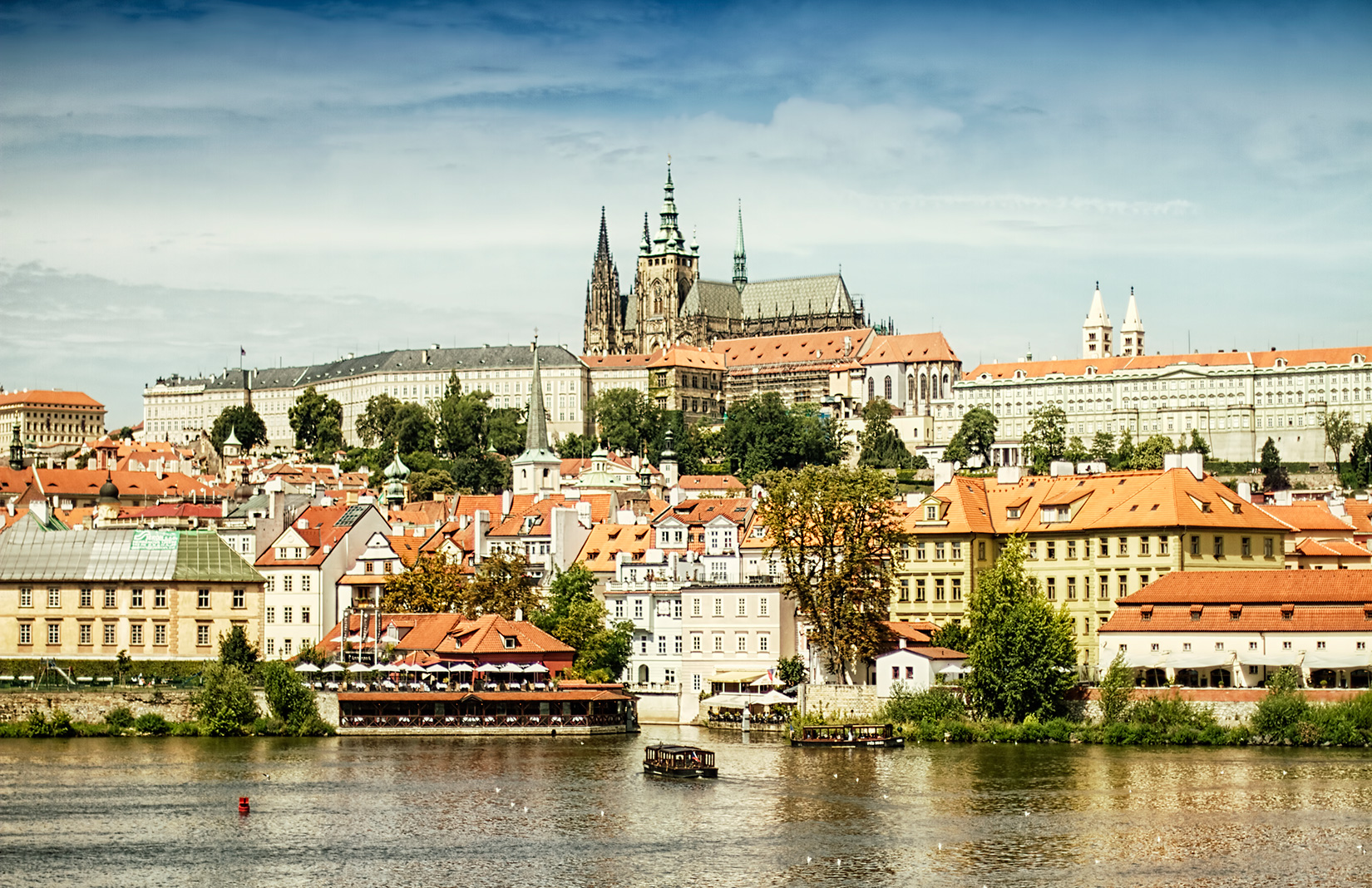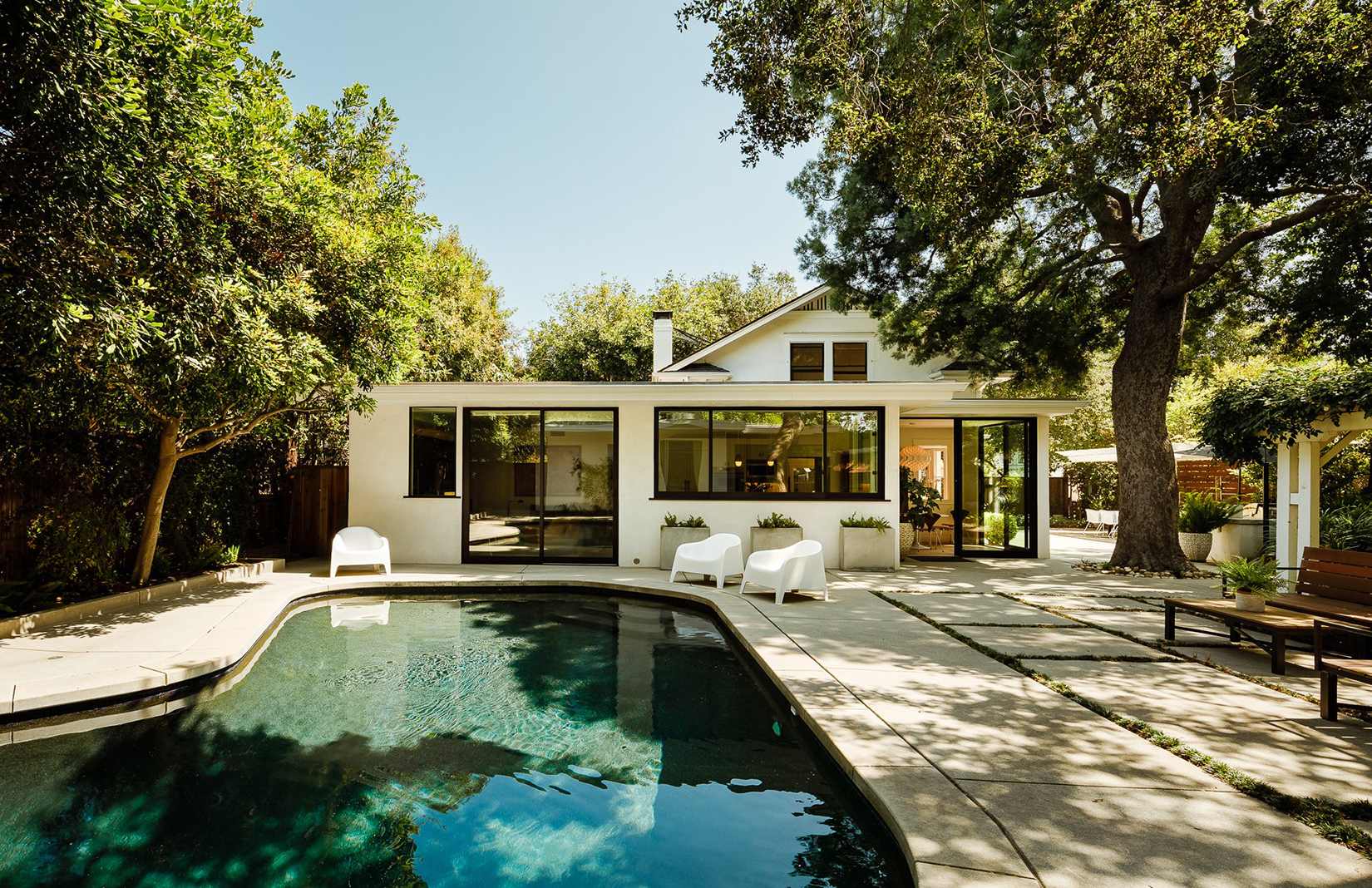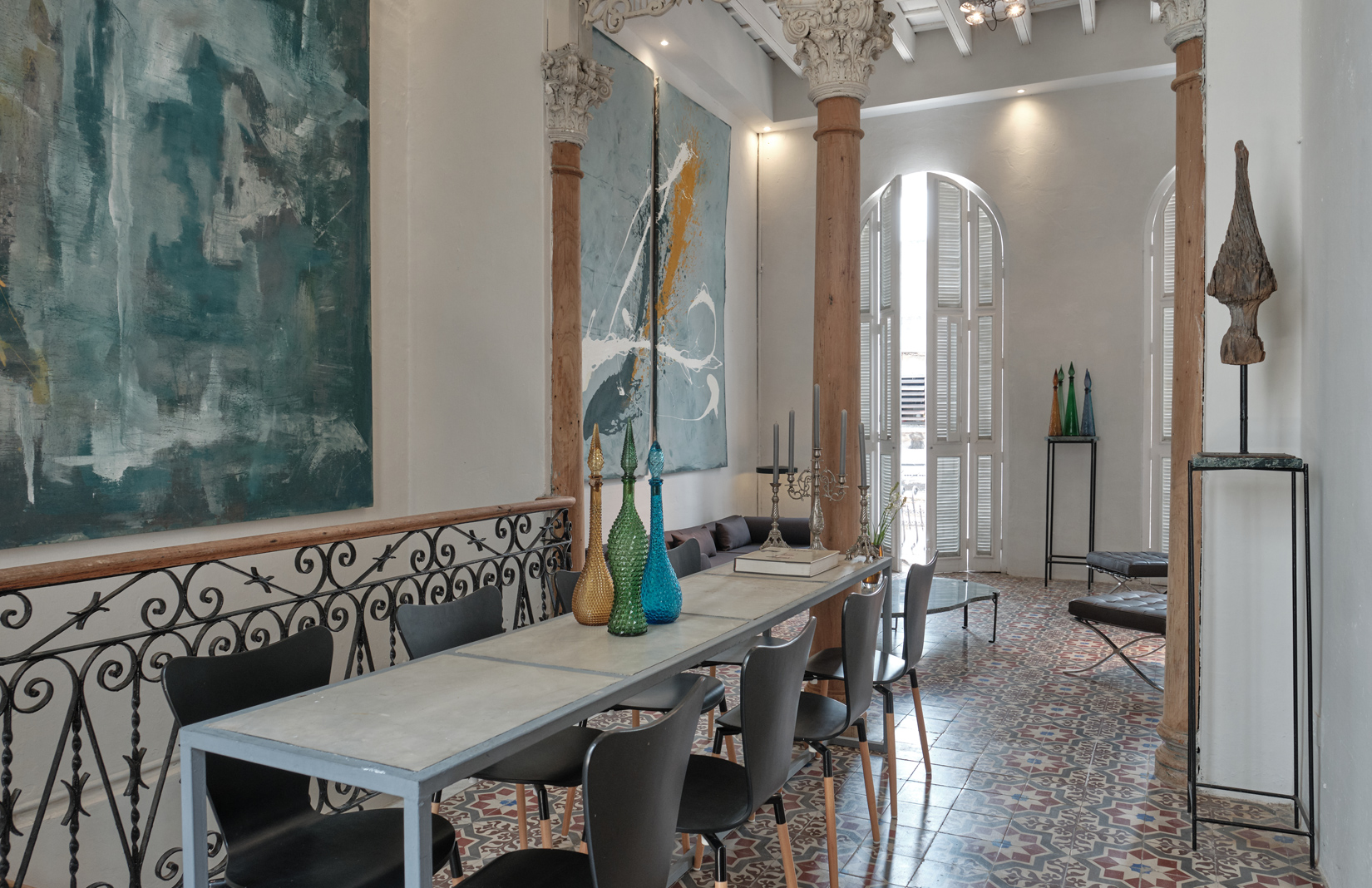Prague is rich with architectural landmarks that are a testament to its changing fortunes. Dubbed the City of a Hundred Spires, it was the seat of the Kingdom of Bohemia and the favoured residence of several Holy Roman Emperors, most notably Charles IV – for whom its Charles Bridge is named. Under his tutelage, the city flourished as an imperial capital.
In fact, Charles laid out the design of the city’s mid-13th-century ‘New Town’ or Nové Město himself. But it’s not just Gothic architecture that’s to be had in Prague: the Czech capital is a paradise for history and design fans.
Mostly spared from the wide-scale bombings of WWII, the city’s medieval centre has remained pretty much intact and eye-catching examples of Baroque and Renaissance architecture lie around every corner.
More contemporary additions come from the country’s Communist era, as well as Modernist and contemporary additions to the cityscape…
In no particular order, here are 12 of Prague’s must-see architectural landmarks.
Powder Tower
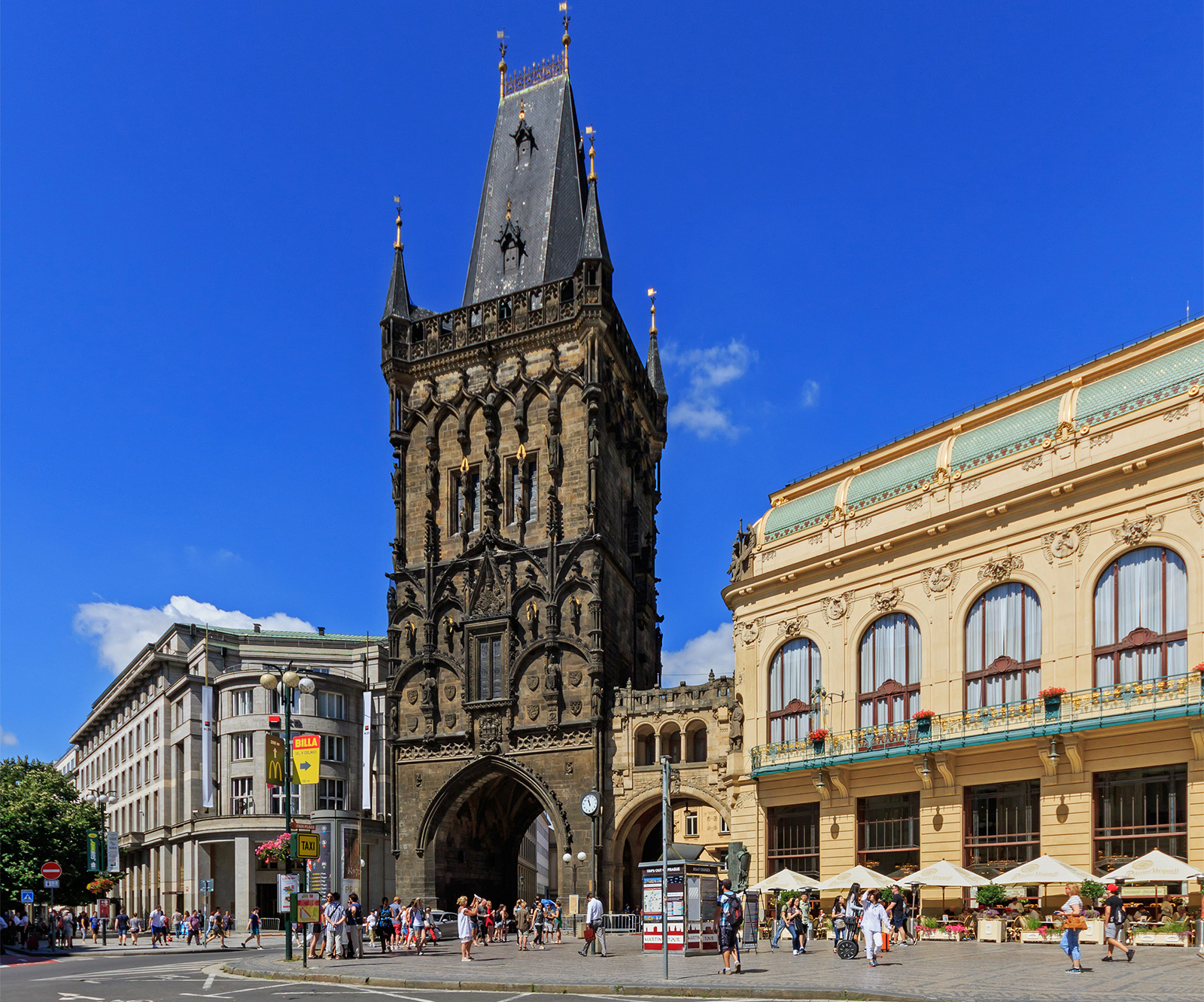
This dramatic, 65-meter-tall gothic tower was built as one of 13 gates to the city. Modelled after the Old Town Bridge Tower and studded with sculptures, its name comes from its use as a gunpowder store in the 17th century.
Dancing House
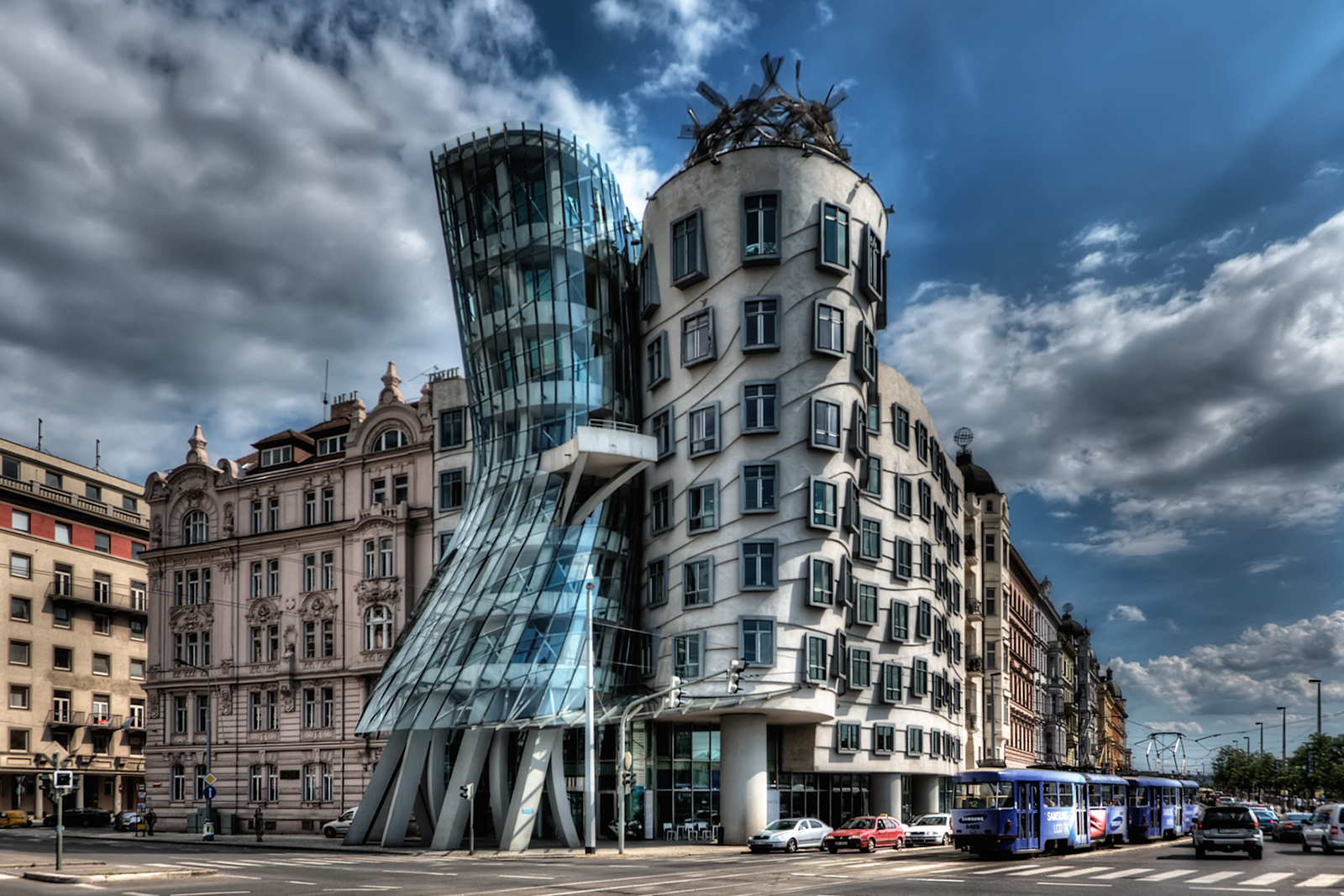
Prague’s most famous concession to contemporary (post-1989) architecture is the Dancing House, which was designed by Croatian-Czech architect Vlado Milunić and Frank Gehry and opened in 1992. Its curvaceous outlines host a top-floor restaurant with impressive vistas of the Vltava River.
St Nicholas Church

The imposing St Nicholas Church took almost a century to complete by three generations of the Dientzenhofer family, notably father and son builders Kryštof and Kilán Ignác, who were co-creators of the Czech Baroque movement. The church is marked by a 20-metre green dome; its intense interior features a ceiling fresco by Johann Kracker and a 4,000-pipe organ once played by Mozart.
Kinsky Palace
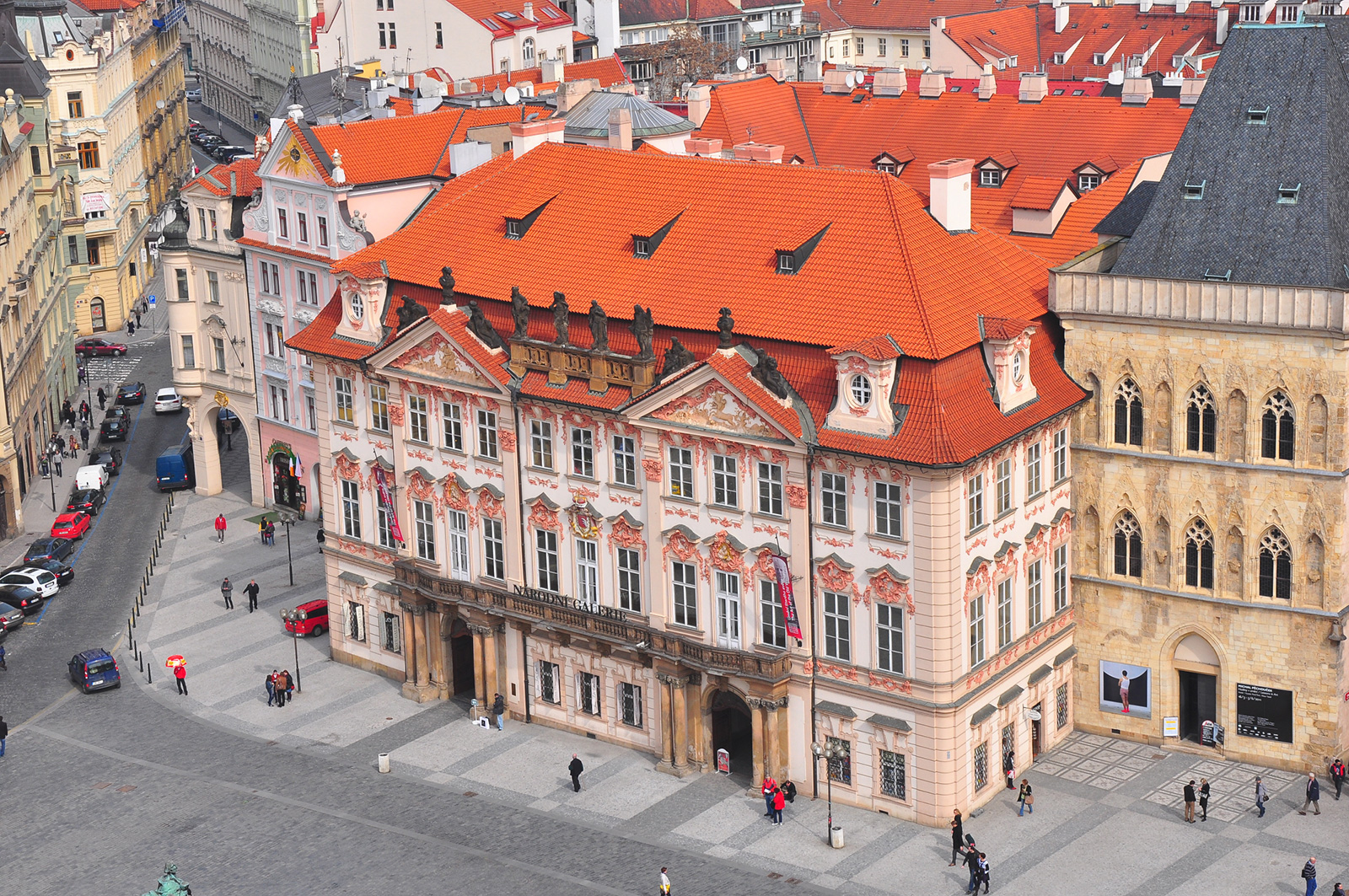
Located on Prague’s fairytale-like Old Town Square, the Kinský Palace, notable for its attractive pink and white Rococo façade, was built between 1755 and 1765. It was originally owned by the aristocratic Kinsky family and once contained a secondary school that was attended by one Franz Kafka…
National Museum
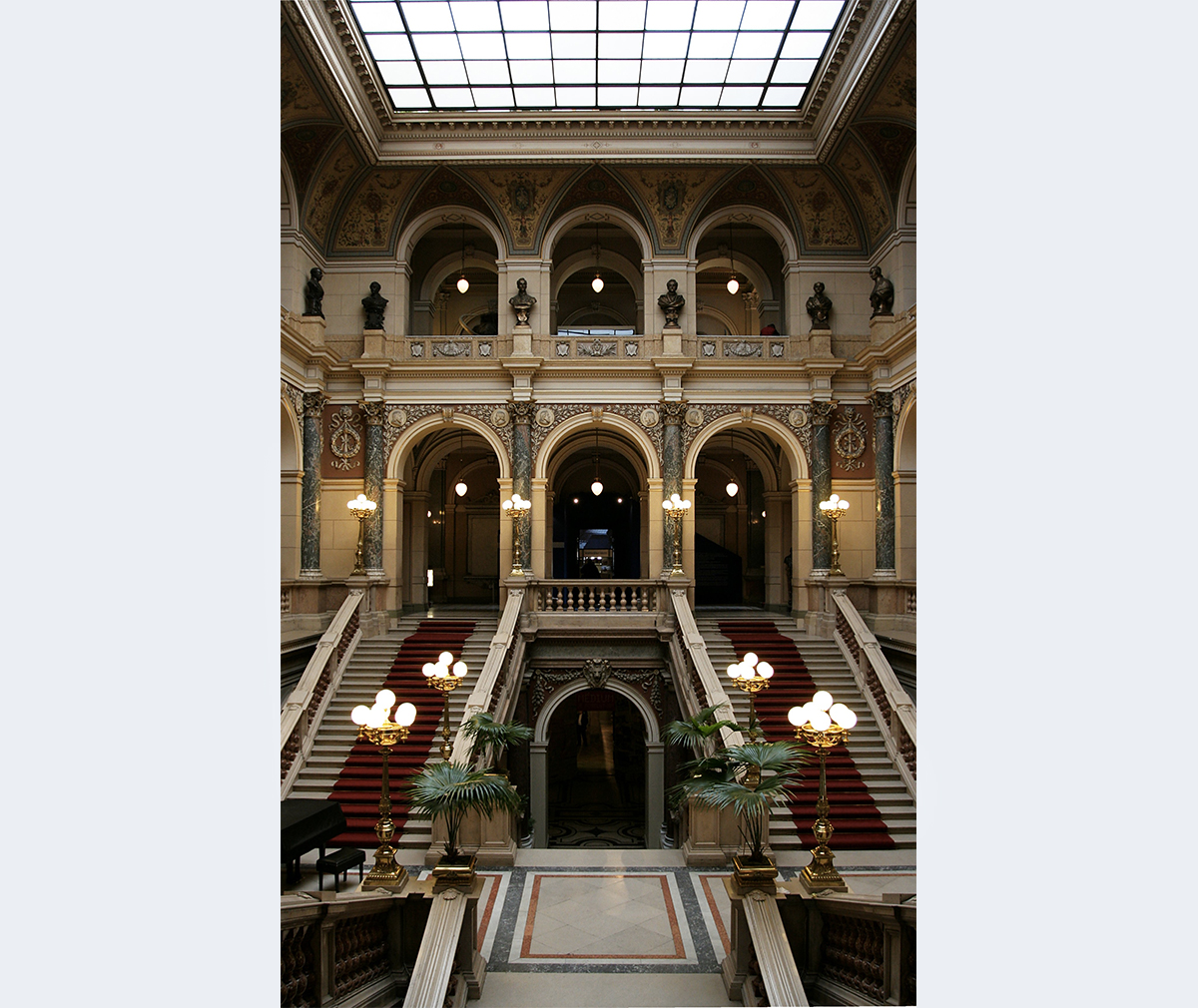
This immense Neo-renaissance piece of Prague architecture, which looks grandly out over Wenceslas Square, was designed by Josef Schultz and built between 1818 and 1891. Especially impressive is its main entrance, which features ceiling frescos, sweeping staircases and intricate stonework.
Municipal House
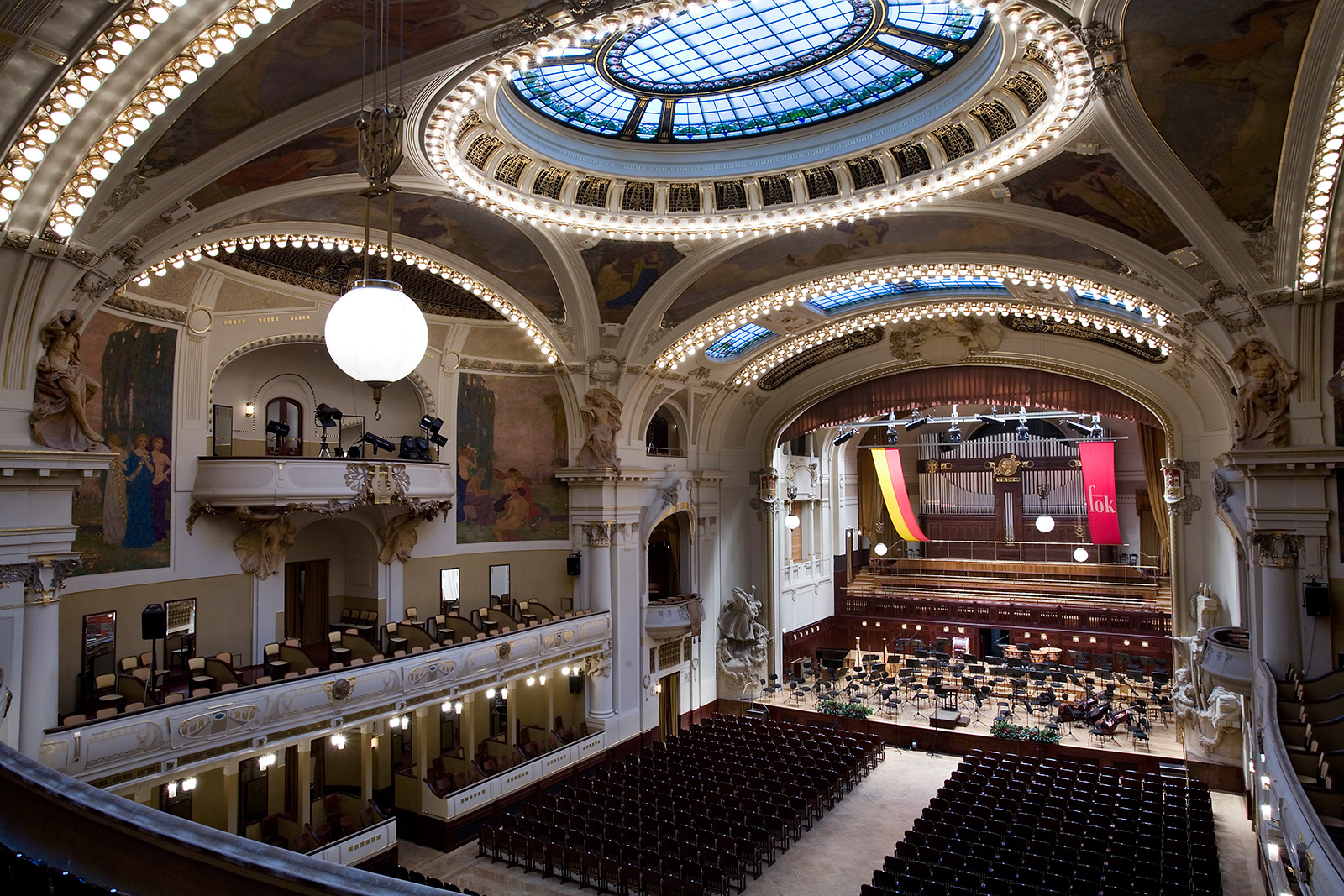
This quintessential Art Nouveau building – replete with its stained glass windows, elaborate mosaics and gilded decorations – was completed in 1911 on the former site of the Royal Court Palace. Its sumptuous interior features the glass-domed Smetana concert hall, plus a popular grand cafe and restaurant.
St George’s Basilica
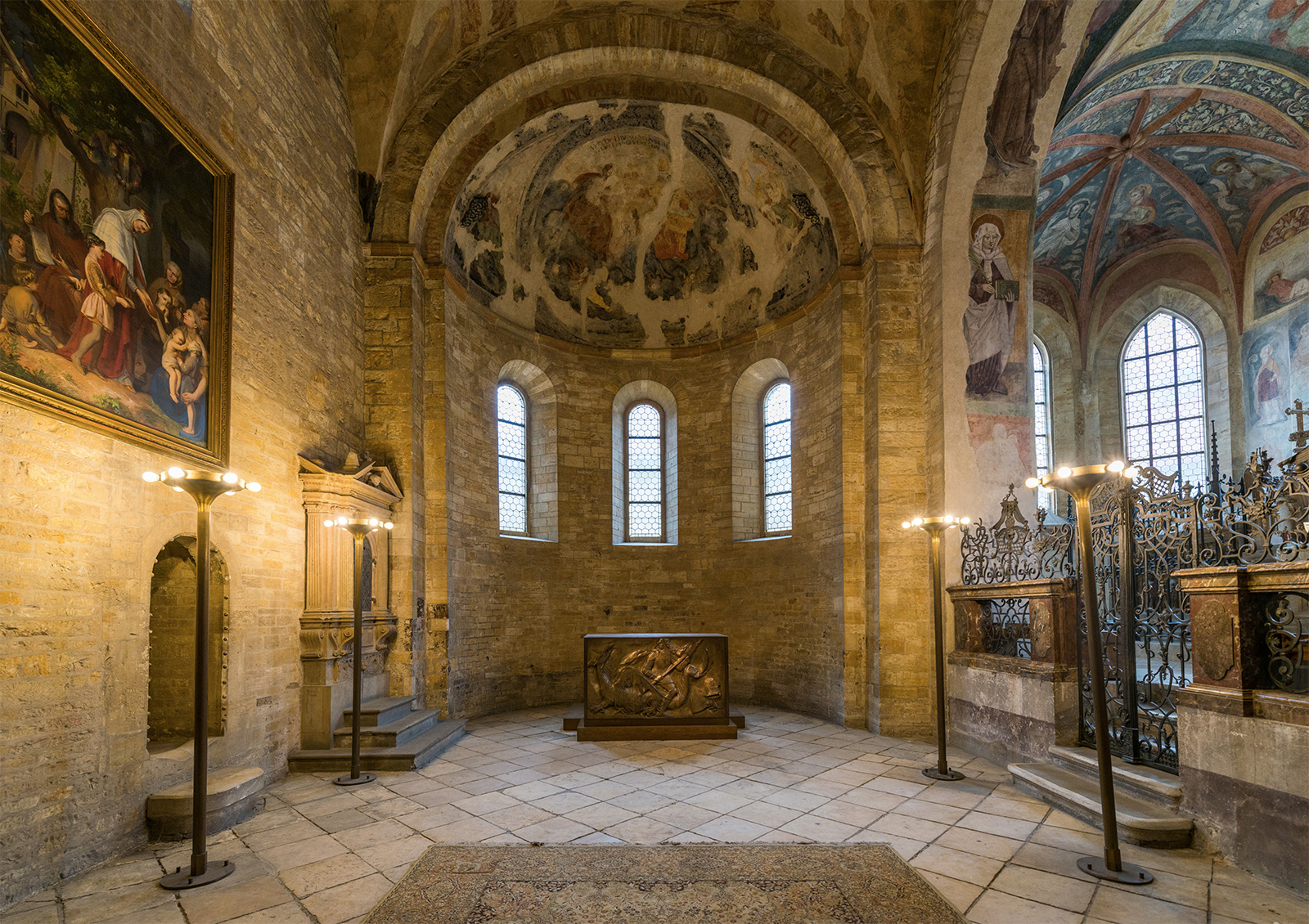
This splendid basilica lies within Prague’s sprawling Royal Castle complex, alongside other architectural delights like the soaring St Vitus cathedral. The Baroque, 17th-century red facade leads into a Romanesque stone interior with an impressive cross-vaulted ceiling and semi-circular arches.
Villa Müller
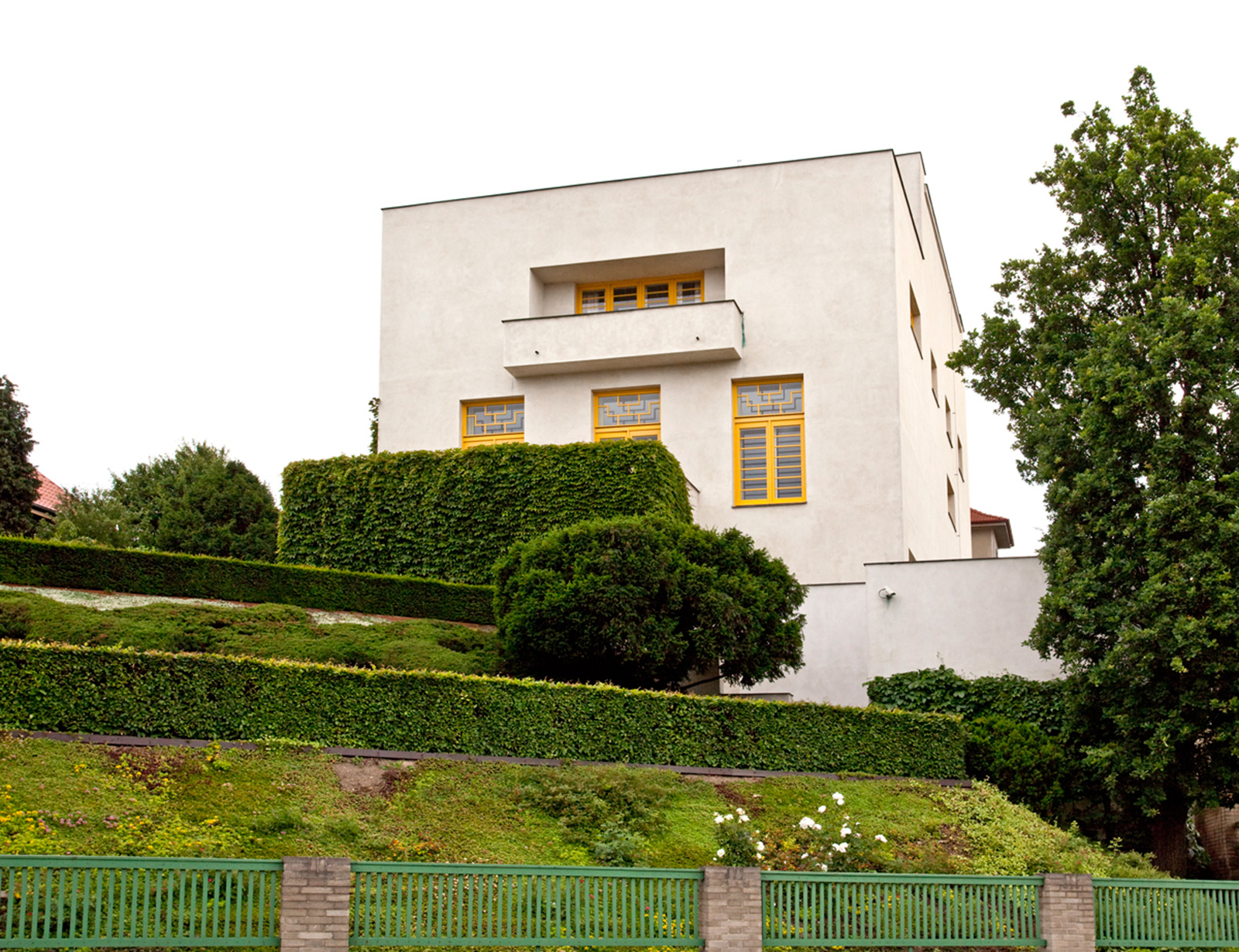
Designed by Adolf Loos for engineer František Müller and his wife Milada Müllerová, this avant-garde villa is one of the most significant examples of Loos’ ‘Raumplan’ concept. Restored between 1997 and 2000, the white, cubic structure is now a National Cultural Monument and open to the public.
House of the Black Madonna
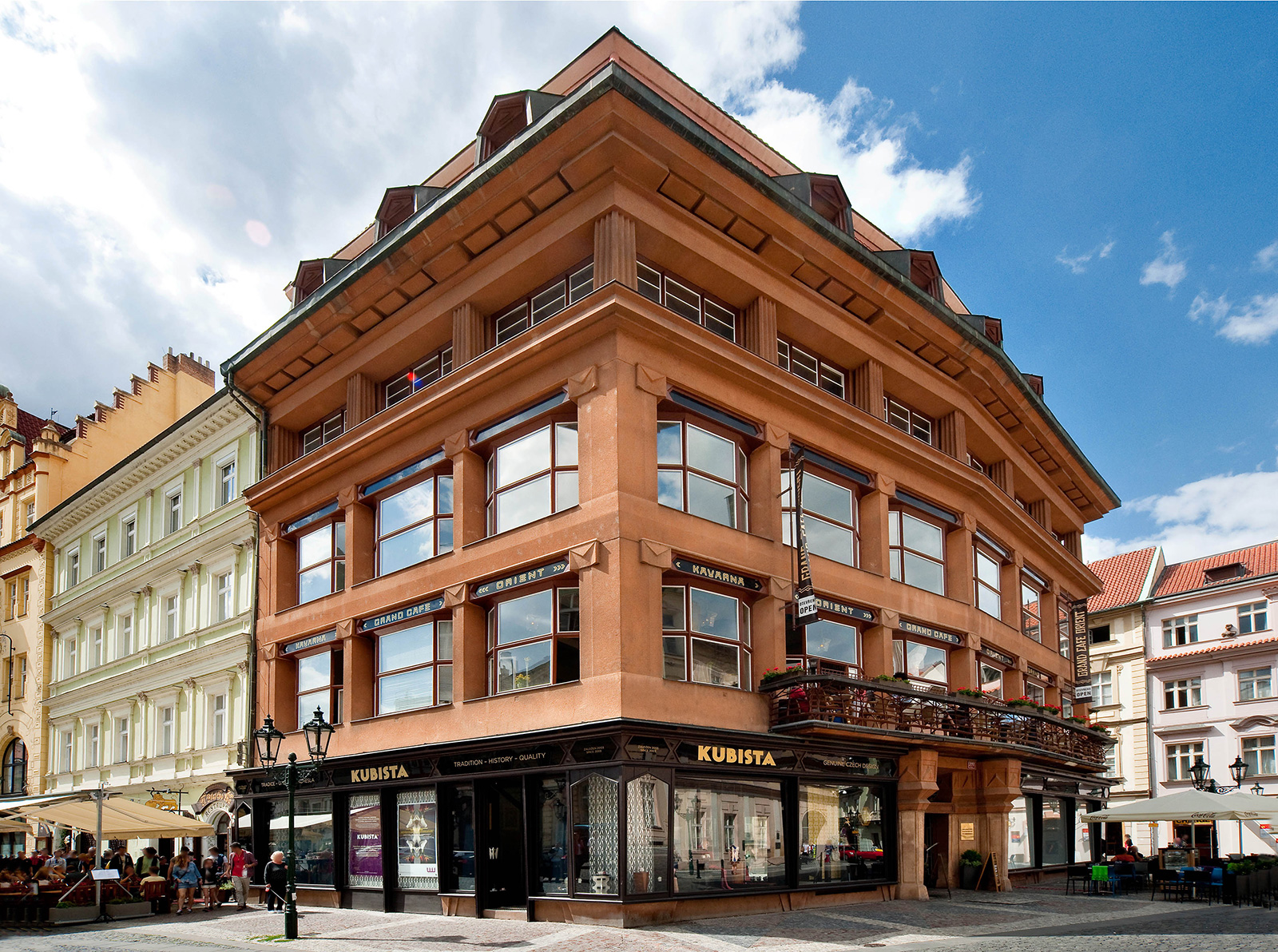
Originally built as a department store in 1912, this cubist Prague architectural landmark was designed by famed Czech architect Josef Gočár. Reconstructed in the 90s, it now houses the Museum of Decorative Arts – which hosts a permanent exhibition on Czech Cubism – and a cafe that boasts the only Cubist interior in the world.
St Wenceslas Church
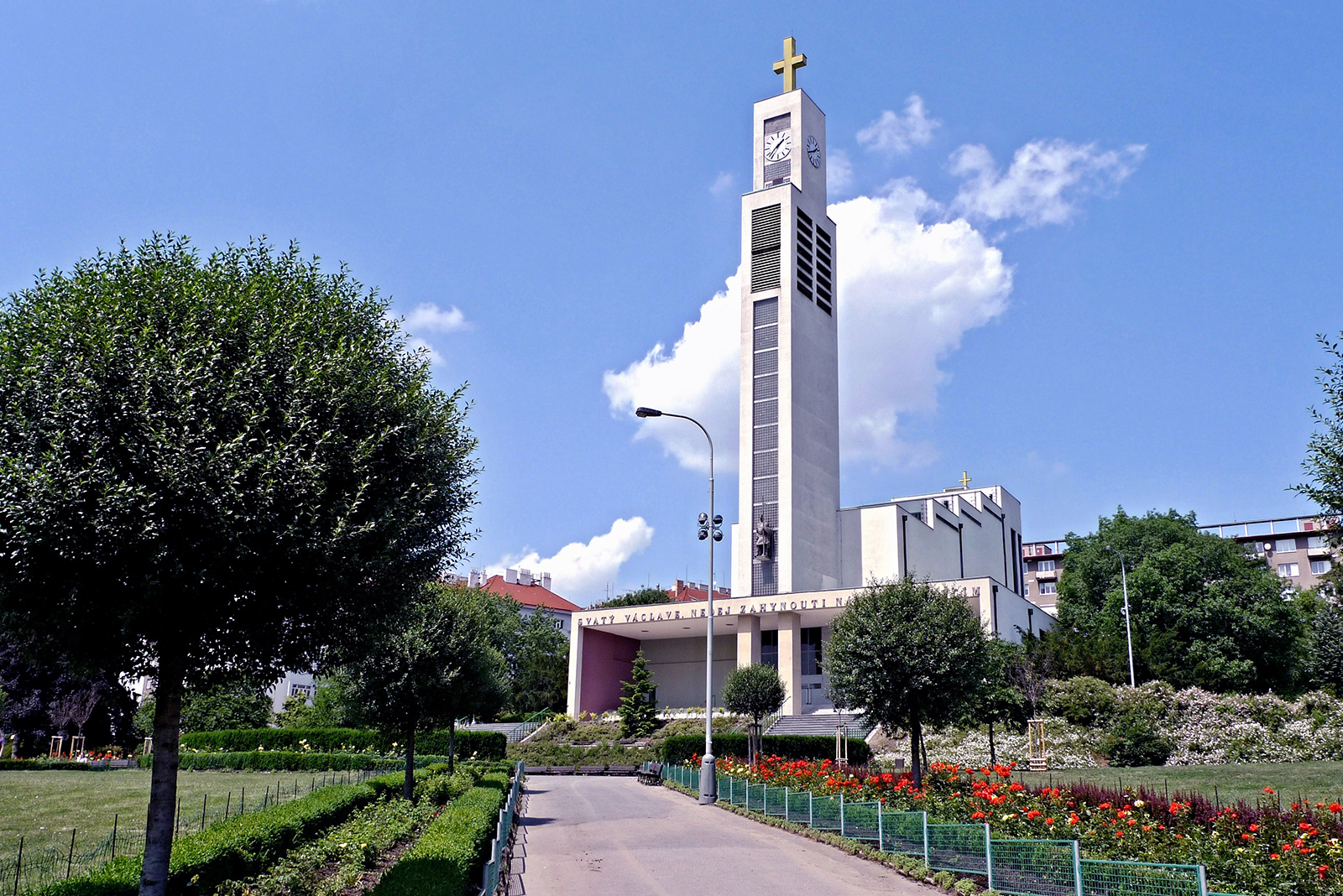
Designed by Josef Gočár (see the House at the Black Madonna), this white, reinforced-concrete church was built between 1929 and 1930 in classic Constructivist style. Located in Prague’s pretty Vršovic district, it features a stepped roof and a wonderfully slender 80-metre bell tower.
Zizkov TV Tower

At 216 metres high, Zizkov’s soaring communist TV tower is the tallest Prague architectural landmark. Used as a meteorological observatory and tourist attraction (there’s a restaurant and cafeteria inside), it’s most famous these days for the giant babies that climbed its outside thanks to Czech artist David Černý.
The Masaryčka Building

Dancing House set a precedent for daring architectural projects in the Czech capital, a mantle that Zaha Hadid Architects gleefully assumed when constructing the fin-like Masaryčka building in the city’s New Town. While its interiors are still ongoing and the overall project isn’t due to open until 2016, the building’s exterior already showcases the impact of this sculptural monument on the streetscape.
The swooping fin-like building is a pivotal component of Prague’s efforts to modernise the historic Masaryčka Railway Station, encompassing a new railway entrance, plaza, and retail spaces and offices on a once-empty brownfield site adjacent to the train tracks. The Masaryčka Building’s facade, adorned with golden fins reminiscent of Prague’s famous spires, along with its sweeping lines and prow-shaped entrance reminiscent of a cruise ship, adds a bold contemporary touch to the city’s architectural heritage.
This story was updated on 19 December 2023.




